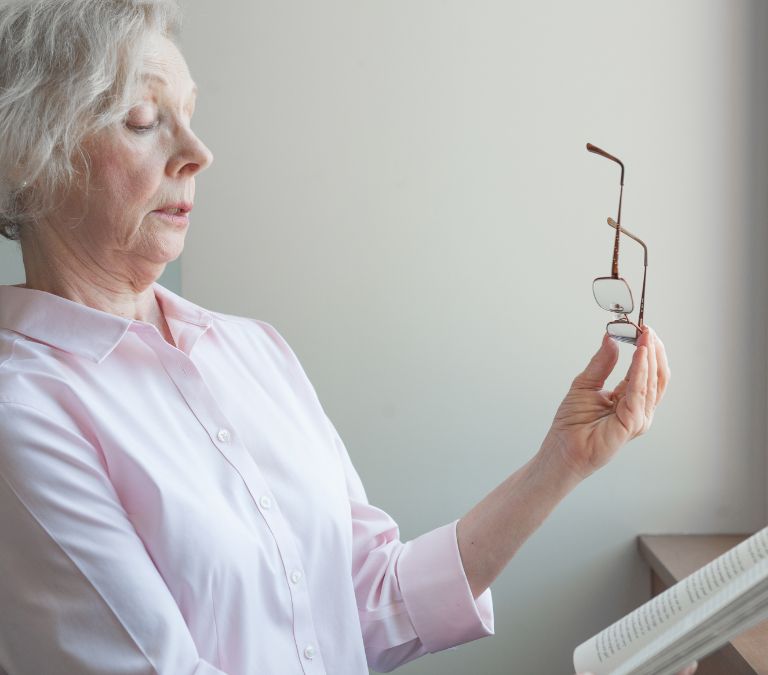When we hear the word “menopause,” we often think of that phase of every woman’s life, where her ovaries lose the ability to produce eggs and become unable to get pregnant. If you see menopause this way, then you are right. However, while menopause depicts the loss of fertility, some other things are associated. One of those associated problems is eye problems during menopause, this will be discussed in detail in this article.
Generally, women have a more complex and elaborate reproductive system when compared to men. The reproductive system of women evolves as growth occurs. The reproductive tract is ever-changing from childhood to puberty, adolescence to menopause. As these changes occur, the woman is at the receiving end of every complication that comes with it. Now back to menopause.
The ovaries are the main producers of the estrogen hormone in women. The body’s estrogen levels rapidly decline when the ovaries are removed. During menopause, the ovaries do not only lose their ability to produce eggs; they also lose their ability to produce the estrogen hormone.
With this, a woman’s body going through menopause is bound to experience fluctuations in the estrogen hormone. This decline in estrogen levels is the cause of most of the symptoms and complications experienced during menopause. From the characteristic hot flashes and night sweats to the extremely discomforting migraines and headaches, the period of menopause is plagued by a wide array of symptoms with varying severity.
The hormone fluctuations make the average menopausal woman more susceptible to problems like weight gain, breast cancer, diabetes, and heart diseases. Yikes! Menopause is more complicated than you think.
While many women see menopause as a period of relief from everything related to monthly cramps and pregnancy scares, some women go through the most during the menopausal period of their lives.
Using the United States as an example, most women in the menopausal phase of their lives go through a smooth or mild transition. For these women, menopause is a gateway to freedom. Freedom from premenstrual mood swings. They say “goodbye” to all the negative things of the reproductive age. Bloodstained panties, gone; use of birth control, gone; monthly cramps, gone! While menopause kick-starts this under-hyped chapter of a woman’s life, some other women see this phase as a state bombarded by health complications and zero rest.
On the other end of the scale are women who go through the journey of menopause with a series of severe hot flashes, sexual dysfunction, and insomnia. Sometimes, women who go through the most during menopause tend to experience these symptoms for as long as 15 -18 years. For these women, their period of menopause is labeled as a period of absolute discomfort and utmost demoralization.
Irrespective of our attitude towards menopause, women going through menopause are susceptible to numerous health risks. I will be very honest here; menopause isn’t like any other stages we as women go through. During menopause, we can go through some bizarre and hectic symptoms that could make no sense to us: heart diseases, eye problems, rapid hormonal changes, and a rise in Low-Density Lipoprotein. As a result, women going through menopause are susceptible to many illnesses.
Understanding Perimenopause
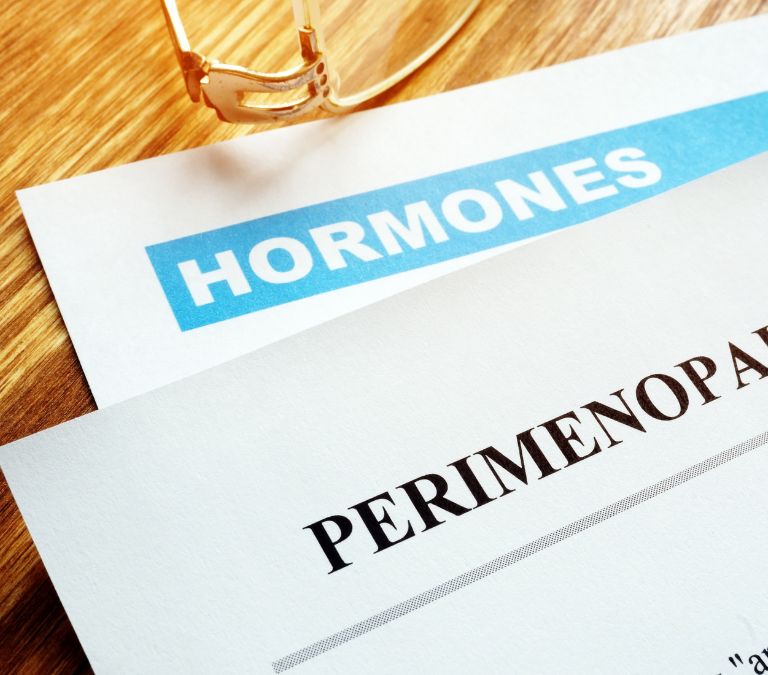
Menopause is divided into three stages. They are perimenopause, menopause itself, and post-menopause.
Perimenopause is the period leading to menopause. The average age for women to go into menopause in the United States is 52. However, the body can begin to show some symptoms of menopause about seven to five years earlier. Sometimes, it even starts as early as 40. The first symptom experienced by perimenopausal women is irregular periods.
When the periods become irregular during your 40s, you could show signs of transition into menopause. Immediately the body goes through twelve consecutive months of zero periods; then, you are officially in menopause. However, it is important to know that perimenopause doesn’t last twelve months; it could last several years. You could go through irregularities in your period pattern for five years. Menopause only comes when those periods leave without returning for twelve consecutive months, a complete year.
Postmenopause, on the other hand, comes just after menopause. Let’s put it this way; perimenopause happens before menopause, and Postmenopause happens after menopause. At the stage of Postmenopause, the body is somewhat stable, and the menopausal symptoms are now mild.
However, some women experience severe menopausal symptoms for several years, even after undergoing Postmenopause. Once you’ve got here, you will remain here for the rest of your life. It’s not scary. It’s natural, and every woman on earth must pass through it.
Generally, perimenopausal women go through more severe symptoms than postmenopausal symptoms. However, remember that different women have different reactions to menopause, and the severity and longevity of symptoms can vary.
Studies have shown that women in the perimenopause phase of their lives will experience more severe symptoms when compared to women in the post-menopause phase. It is because, during perimenopause, the body is probably experiencing rapid fluctuations in hormonal levels for the first time.
As a result, the symptoms aggravate, and the woman suffers it. So, if you are in your 40s and think you are free from the complications associated with menopause, you should reconsider. Menopause can trigger osteoporosis (weakening of the bones), menopause can cause bloating, it can influence weight gain, and menopause can even cause some eye problems.
Menopause and Your Eye Health
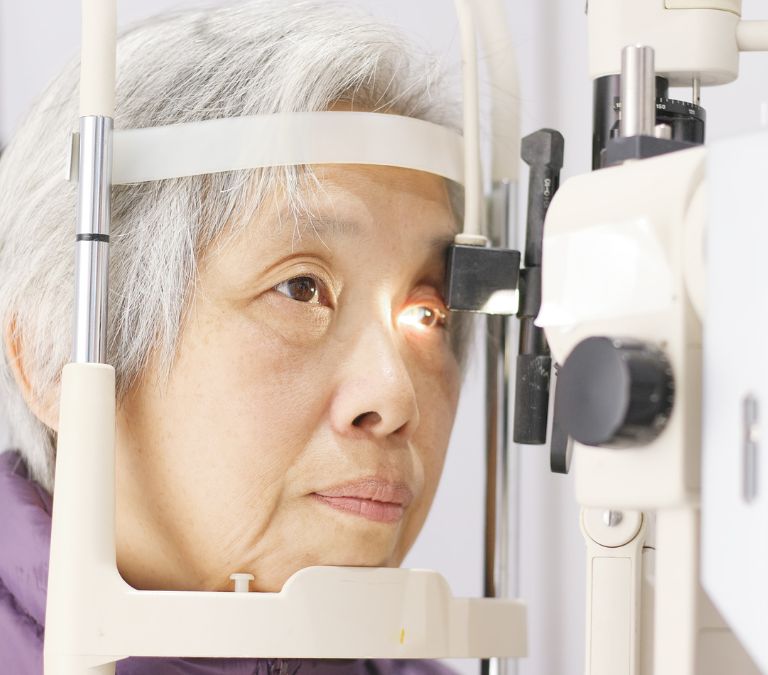
Menopause and your eyes. How do they link? Generally, eyesight deteriorates with age. For this reason, it is sometimes difficult to point to menopause as the cause of some eye problems in mid-age women. However, many problems with eyesight experienced by women today are caused by fluctuations in hormonal levels. As the hormone levels fluctuate, some women may experience changes in their eyes’ mechanism and physical structure. Funny how menopause, a change in the operation of the reproductive system, could affect the eyes.
Eye Problems to Look Out for during Menopause
Some problems of the eye to be cautious of, especially as a woman going through menopause, includes:
Dryness of the Eyes
Having dry eyes is a big issue during menopause. In the eyes, the mucous membrane helps in ensuring constant lubrication. These membranes are also found in places like the lungs and the vagina. While these membranes are very important in maintaining fluid in regions where they are located, a drop in estrogen levels will only lead to inefficiencies in their metabolism. For this reason, the eyes become dry.
It can also be seen in cases of vaginal dryness during menopause. When the eyes become dry, it causes the utmost discomfort. The eyes depend on blinking to help keep them moisturized. When the mucous membrane is ineffective enough, moisture will not be circulating even after blinking. As a result, your eyes begin to shift dependency on tears to get moisture.
Of course, you can’t cry all the time. As a result, the eyes become scaly and gritty, and your sight can be affected. While dry eyes could be caused by menopause, they could also be influenced by other factors like a dry environment, where the humidity of the environment affects the moisture content of the eyes, and Sjögren’s syndrome, an autoimmune syndrome where the immune system of the body attacks the tears and saliva-producing glands of the body.
Symptoms of Dry Eye
- · Blurred vision
- · Scratchy eyes
- · Reddened and swollen eyelids
- · Increased tearing
- · Visual discomfort
- · Tired eyes
- · Light sensitivity
- · Burning
- · Dry eyes
Treatment of Dry Eye
There are a variety of treatment options for dry eye. Most treatment options for dry eye are focused on conserving and increasing tears and, at the same time, treating inflammation. The most common treatment option for dry eye is eye drops to serve as artificial tears and help supplement the lack of natural tears. Besides eye drops, nutritional supplements like omega-3 fatty acids can help increase tear production. You should see a doctor immediately when you notice that your eyes are easily dried. Sometimes, your doctor must gently massage the eyelids or apply warm compresses.
Cataracts
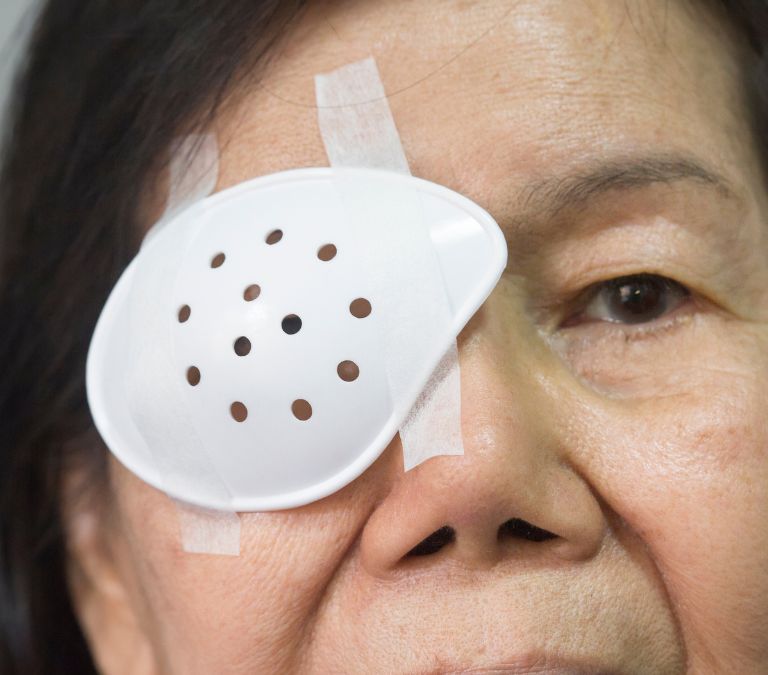
When the eyes’ natural lens becomes clouded, then a cataract is formed. Cataract causes blurry vision; not even blinking or glasses can help improve it. While cataracts come with age, hormonal fluctuations in menopausal women have been linked to being the cause of some cases of cataracts. Research has shown that menopause has been a direct cause of cataracts for many women in the United States. In addition, cataract is more prevalent in menopausal women than in men of the same age.
Symptoms of Cataracts
- loss of color intensity
- Difficulty seeing at night
- Cloudy vision
- Blurry vision
- Seeing halos around light sources
- Double vision
Treatment of Cataracts
The only true treatment for cataract treatment is the removal of the cataract by surgical means. However, if detected and treated very early, you can improve symptoms by using new pairs of eyeglasses or simply by reading in brighter light. When these methods do not work, and the vision problem affects your everyday routine, you have no choice but to opt for surgery.
During cataract surgery, the surgeon only replaces the cloudy lens with a clear and artificial lens. After this procedure is performed, vision becomes better. So many individuals who have engaged in cataract surgery usually comment on having better vision than before getting a cataract.
Glaucoma
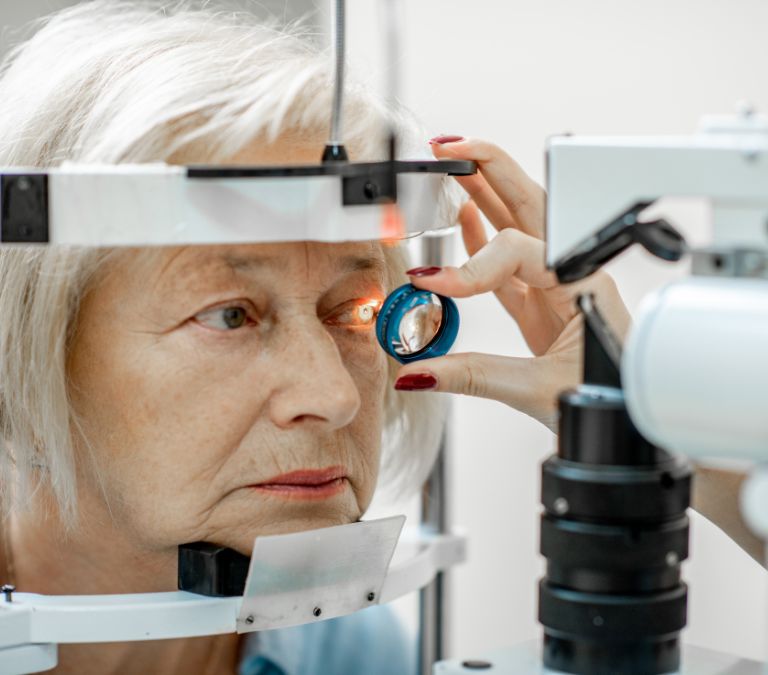
When pressure builds inside the eye, it can lead to glaucoma. When pressure runs too high in the eyes, it can cause severe and permanent damage to the optic nerves. If this is left untreated for a long period, it could lead to permanent vision loss. Generally, there are two types of glaucoma; the open-angle and the closed-angle.
Do you know the space between the iris and the cornea? Yes, that part of the eye where the fluid drains. That part of the eye can either be open or closed. If this region is closed, then the pressure inside the eye goes up. Unlike closed-angle glaucoma, open-angle glaucoma doesn’t cause severe symptoms like blurry vision and pain. Research has shown that women are at an increased risk of open-angle glaucoma, which is suspected to be caused by lower estrogen levels during menopause.
Symptoms of Glaucoma
- · Headache above the eyebrow
- · Redness of the eye
- · Eye pain
- · Blurry vision
- · Vision loss
- · Rings or halos around light sources
Treatment of Glaucoma
When detected early, you can protect your eyes from vision loss and blindness caused by glaucoma. Unfortunately, because glaucoma generally has no symptoms in its early stages, many women do not know when they have it. Before they realize it, it’s already too late. In reality, there is no cure for glaucoma.
However, modern innovations in medical procedures have provided ways of managing glaucoma. In some certain cases, you can take medications to help slow down its progression. One good way to manage glaucoma is by administering eye drops and pills to help cushion rising pressure in the eye.
Surgical procedures to create another opening for draining fluid have also been developed. If you are suffering from glaucoma, you must speak to a doctor. They know what is best for you and can help you get the best treatment possible.
Age-related Macular Degeneration
Often regarded as AMD, Age-related Degeneration is the leading cause of vision loss in women in their mid-ages. At the back of the eye is a delicate region called the retina. The retina helps to send signals to the brain about what is seen. During AMD, this part of the eye begins to deteriorate. This retina deterioration can lead to blurry vision and the inability to see straight ahead. Generally, AMD happens when abnormal or unwanted blood vessels grow right at the back of the eye. In the end, the macular is damaged.
Symptoms of AMD
- · Center of your vision becomes blurry
- · Blank spots in vision
- · Dullness of colors
- · Trouble seeing in low light
Treatment of AMD
There are two types of AMD; wet AMD and dry AMD. For wet AMD, there is a cure. Unfortunately, there are no treatments for dry AMD. Dry AMD is only prevented by adopting lifestyle changes.
Hormone Replacement Therapy as a Remedy for Eye Problems during Menopause
Abbreviated as HRT, hormone replacement therapy treatment option involves relieving symptoms of menopause by simply replacing hormones at lower levels. HRT is typically taken to reduce the effects of menopausal symptoms on women going through menopause. HRT helps replace hormones that have become low as a result of menopause. With this, there tends to be some hormonal balance in the body.
The fluctuations of vital hormones in the body of menopausal women are the main reasons for so many uncomfortable menopausal symptoms. With HRT, symptoms like hot flashes, night sweats, reduced sex drive, vaginal dryness, and mood swings can be relieved. HRT can also help with osteoporosis problems, which are very common in the postmenopausal phase of life.
HRT is very beneficial to menopausal women. Living with menopause can sometimes be difficult, but you could go through a smooth menopausal transition without experiencing complications with this treatment option.
Since hormonal fluctuations are also a major cause of eye problems during menopause, HRT could be used as a remedy. In addition, research has shown that HRT can help improve tear production by a very significant amount.
Taking Care of Your Eyes during Menopause
Now that we know the effects of menopause on eye health, we must do as much as possible to ensure proper maintenance of the eye. This way, we are not subjected to problems of the eye. Your eyesight is one of the most important senses. Of all the things we perceive, 80% come from the eye. Therefore, protecting your eyes from harm reduces your odds of vision loss and blindness. Some ways of protecting your eye health during menopause include:
Following a Healthy Diet
Fruits and veggies. Of course, we’ll be talking about them. Different parts of the body require different diets for optimal functioning. Menopause is a very delicate phase of a woman’s life. It means that small mistakes could lead to harmful complications. When it comes to our diet, emphasis has to be laid on greens, as these vegetables are known to carry with them high amounts of nutrients needed by the body of a menopausal woman to maintain a healthy lifestyle, prevent or cushion the effects of harmful symptoms, and to manage life with these symptoms.
Regarding the eyes, fruits and vegetables are beneficial for maintaining and protecting them. Fruits contain antioxidants that help fight inflammation in the body. Take a lot of leafy greens, and avoid processed foods with artificial sweeteners. Also, avoid foods with preservatives, chemicals, and additives.
These food products are known to damage the health of the eyes. You can take supplements like flaxseed, borage, oils rich in omega-3 acids, and primrose oil. They are excellent for maintaining healthy eyes. Also, you can opt for supplements with probiotics. Probiotics are known to help improve various areas of eye health. Foods with probiotics include pickles, sauerkraut, tempeh, kombucha, live yogurt, and miso. By eating foods with probiotics, you provide your body with enough good bacteria that it needs.
Drinking Lots of Water
So many people today do not know that water is a natural medicine for the eyes. Like other body parts, your eyes need water to work properly. There can’t be moisture in the eyes if there isn’t moisture in the body. It is important to drink water to provide the body with all the moisture it needs. Sometimes, you’re not suffering from dry eyes. You just haven’t had enough water.
Getting Enough Sleep
Sleep is therapeutic. Getting enough quality sleep is important. When you sleep, you give your eyes time to relax and heal from the day’s stress. Unfortunately, as menopausal women, it could be quite difficult to get enough sleep when menopausal symptoms like hot flashes and night sweats are always acting up. Therefore, we should consider taking medications and lifestyle changes to help us alleviate menopausal symptoms.
When to See a Doctor
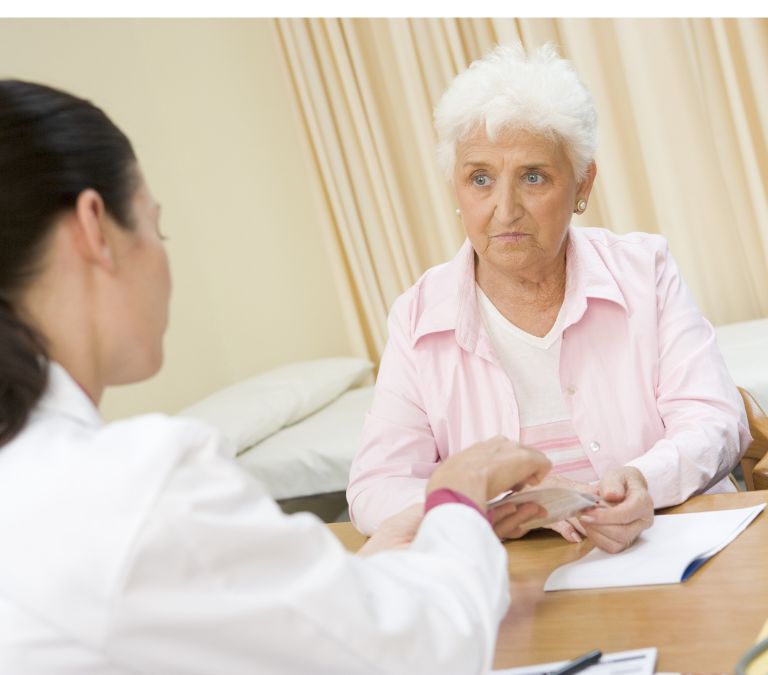
The symptoms of menopause can be very painful, sometimes excruciating. Having a doctor or a medical practitioner you can always run to is important. We should be cautious of our bodies. When we notice the slightest discomfort, do not hesitate to place a call to someone you know can help you with it.
Menopause is a natural part of life and shouldn’t be considered an illness. All women must go through menopause. With every phase of life comes changes. The way of an infant’s life is not the same for a youth or a grown man. So, just like other phases of life, the menopause phase comes with some changes that the body must adapt to maintain a healthy lifestyle. Besides eye problems, menopause is the leading cause of many other complications and symptoms among women in the United States.
It will help if you phone a doctor when your vision deteriorates and becomes uncomfortable. It will help if you phone a doctor when you notice cloudy substances forming in your eyes. When you get blurry vision, and your eyes get uncontrollably red? Phone a doctor.
In the words of Ralph Waldo Emerson, “The eyes indicate the antiquity of the soul.” So don’t close your eyes.

